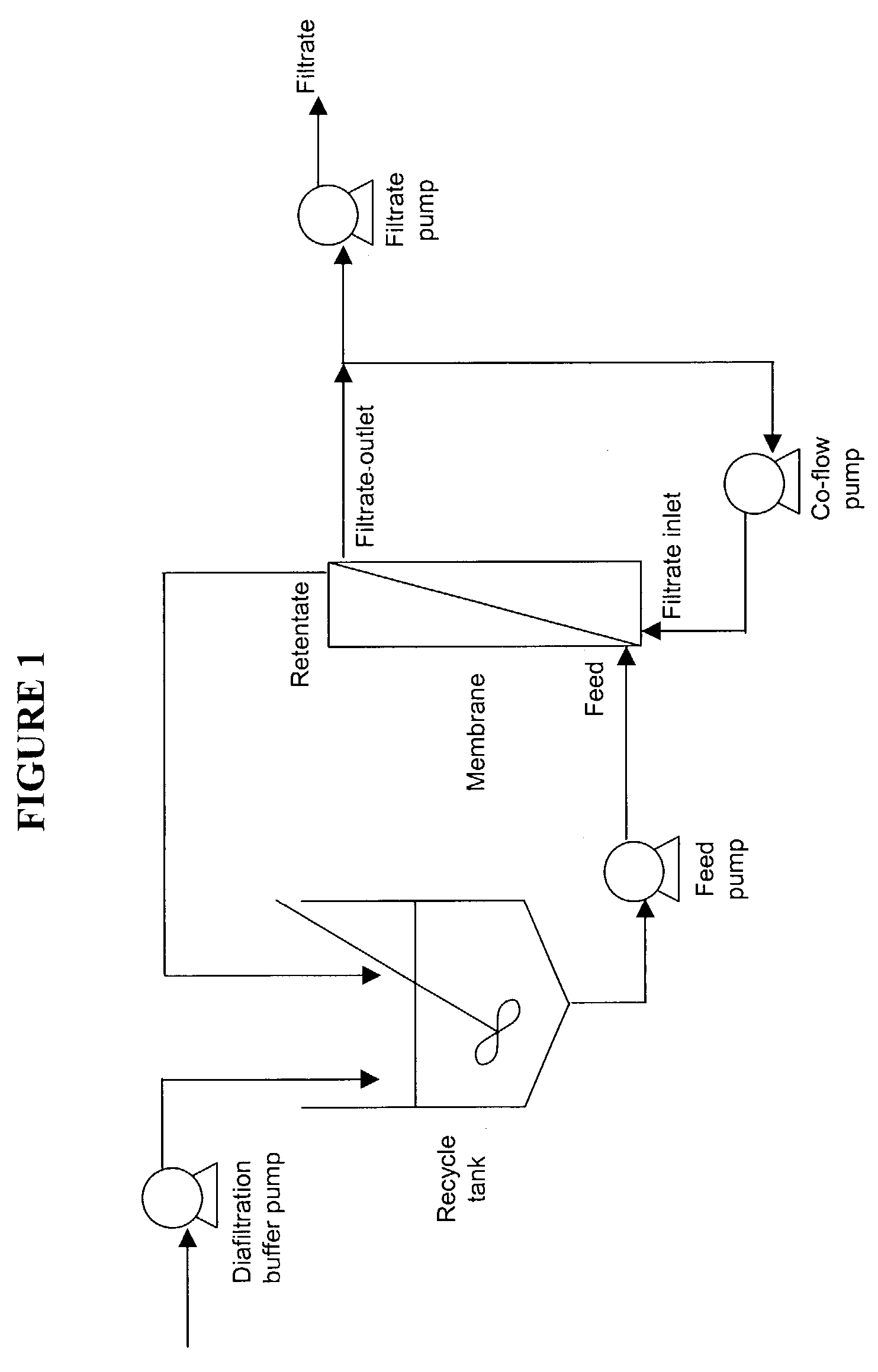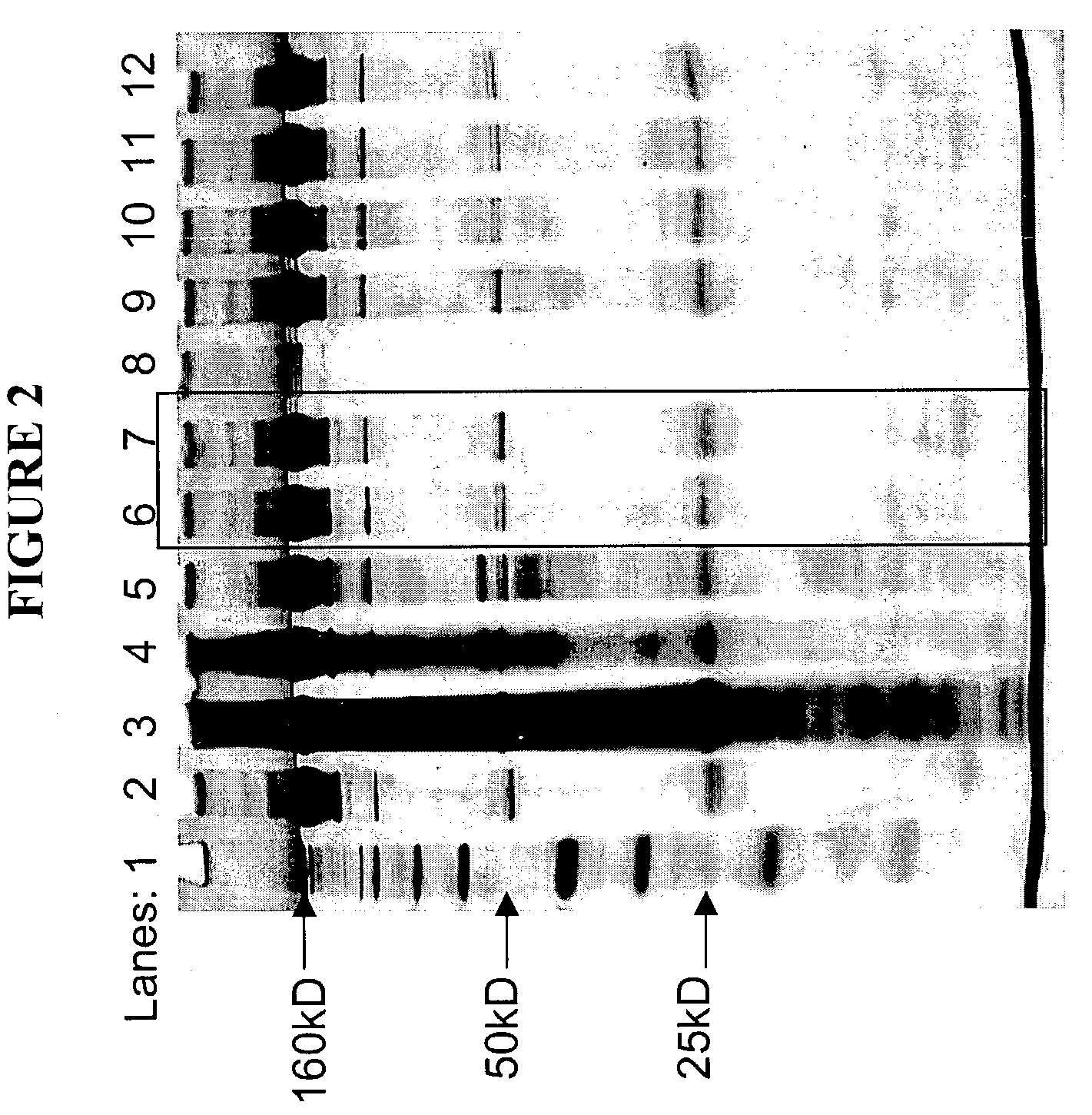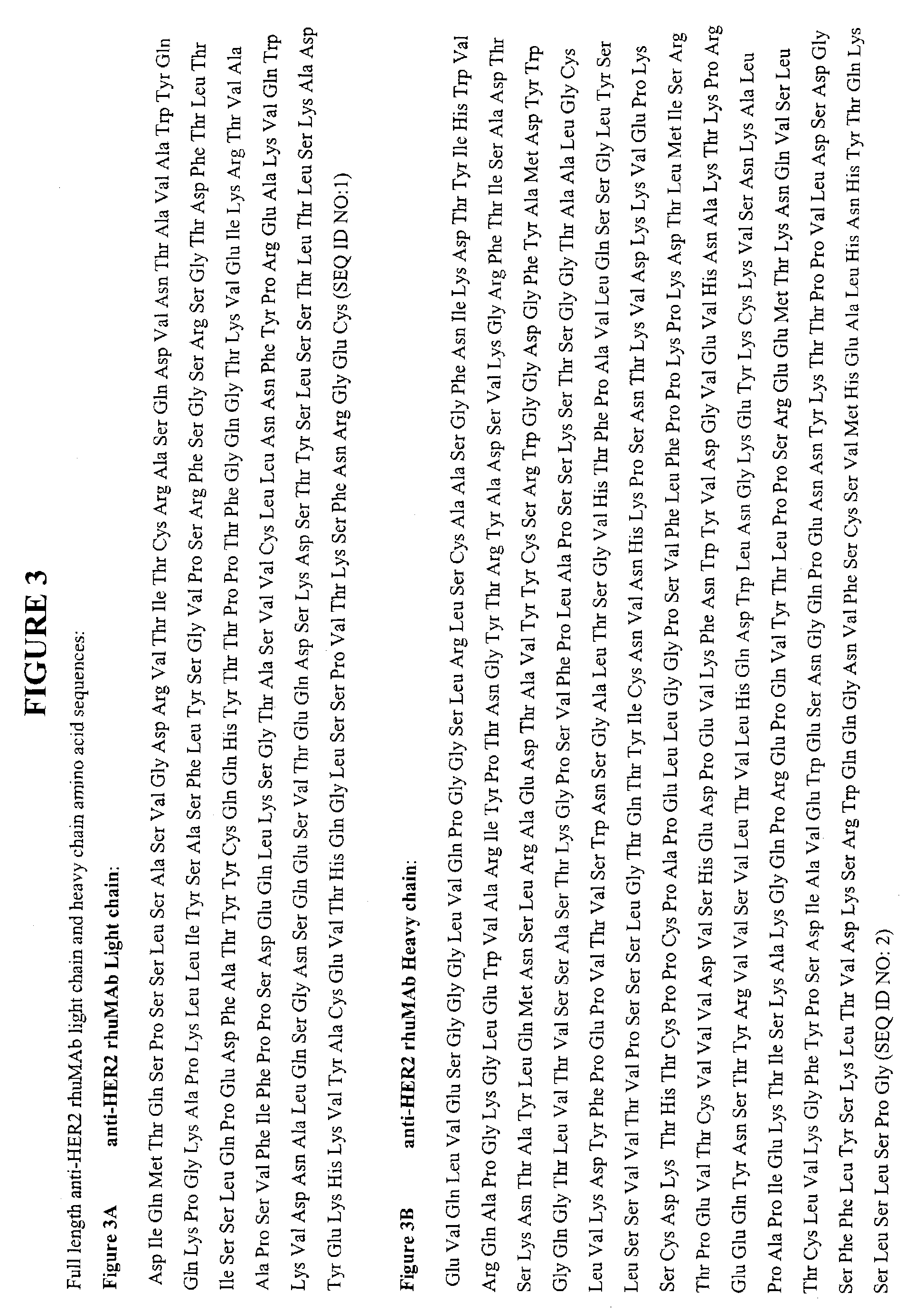Non-affinity purification of proteins
a protein and non-affinity technology, applied in the field of protein purification, can solve the problems of differential retardation of proteins on the hic column, difficult to remove subcellular fragments, and formidable challenges of human therapeutic us
- Summary
- Abstract
- Description
- Claims
- Application Information
AI Technical Summary
Benefits of technology
Problems solved by technology
Method used
Image
Examples
example 1
Two Steps of Non-affinity Purification
[0203]In the present example, the purification of anti-CD11a rhuMAb HCCF was performed with processes consisting of either two steps of non-affinity purification or three steps of non-affinity purification using different combinations of non-affinity purification matrices.
[0204]The purification performance of cation exchange (such as by using an S column), anion exchange (such as by using a Q column), mixed-mode ion exchange (such as by using ABx), hydroxyapatite (HA), hydrophobic interaction (HIC) and hydrophobic charge induction (HCI) resins were examined in each step of the chromatographic purification process for the anti-CD11a rhuMAb protein. Total host cell protein (CHOP) impurity removal and protein yield was determined as described in detail in Example 2 and compared to traditional processes consisting of either two or three steps and incorporating Protein A chromatography (i.e. for two step processes, ProA followed by anion exchange (su...
example 2
Combination of Non-affinity Chromatography and HPTFF Purification
[0216]The present example involves the purification of recombinant human monoclonal antibody, anti-HER2 rhuMAb, with a molecular weight of 160 kD and a pI of about 9.0 from chinese hamster ovary (CHO) cells. The anti-HER2 rhuMAb was obtained from an industrial scale CHO cell culture process at Genentech (South San Francisco, Calif., USA). After CHO cell culture, the anti-HER2 rhuMAb molecule was partially clarified by centrifugation and normal cell filtration to remove cells and cell debris. The resulting pool consisted of 0.52 mg / ml of anti-HER2 rhuMAb product and 0.78 mg / ml of CHOP.
[0217]For purification of anti-HER2 rhuMAb, conditioned harvested cell culture fluid (HCCF) comprising an anti-HER2 rhuMAb product and Chinese Hamster Ovary host cell proteins (CHOP) from CHO cells expressing anti-HER2 rhuMAb was loaded onto an initial cation exchange chromatography column (S) (SP-SEPHAROSE FAST FLOW™ Resin, Amersham Biosc...
experiment 1
a. HPTFF Experiment 1
[0237]After the division of the Q pool, as described above, into equivalent 6.9L Q pools, one of the Q pools was subjected to HPTFF Experiment 1 using a CRC300+ membrane under the following conditions.
[0238]The charged membranes were equilibrated in the first diafiltration buffer for this experiment (see Table 7). The Q pool was diluted to lower the ionic strength and conductivity of the rhuMAb pool to 2.7 mS / cm, adjusted to a pH of 4.5 and then added to the feed tank (FIG. 1). The material in the feed tank was subjected to concentration by removal of a portion of the solution. When the bulk volume reached a bulk concentration (Cb) of 10 g / L, the solution in the feed tank was subjected to sequential diafiltration steps. With a constant conductivity of 1.5 mS / cm, diafiltration was performed with 10 diavolumes at a pH of 4.5 and 5 diavolumes each of pH 5.0, pH 5.5, pH 6.0, and pH 6.5 (Table 7). The yield was calculated based on the quantifiable product sieving dur...
PUM
| Property | Measurement | Unit |
|---|---|---|
| conductivity | aaaaa | aaaaa |
| conductivity | aaaaa | aaaaa |
| mean pore size | aaaaa | aaaaa |
Abstract
Description
Claims
Application Information
 Login to View More
Login to View More - R&D
- Intellectual Property
- Life Sciences
- Materials
- Tech Scout
- Unparalleled Data Quality
- Higher Quality Content
- 60% Fewer Hallucinations
Browse by: Latest US Patents, China's latest patents, Technical Efficacy Thesaurus, Application Domain, Technology Topic, Popular Technical Reports.
© 2025 PatSnap. All rights reserved.Legal|Privacy policy|Modern Slavery Act Transparency Statement|Sitemap|About US| Contact US: help@patsnap.com



